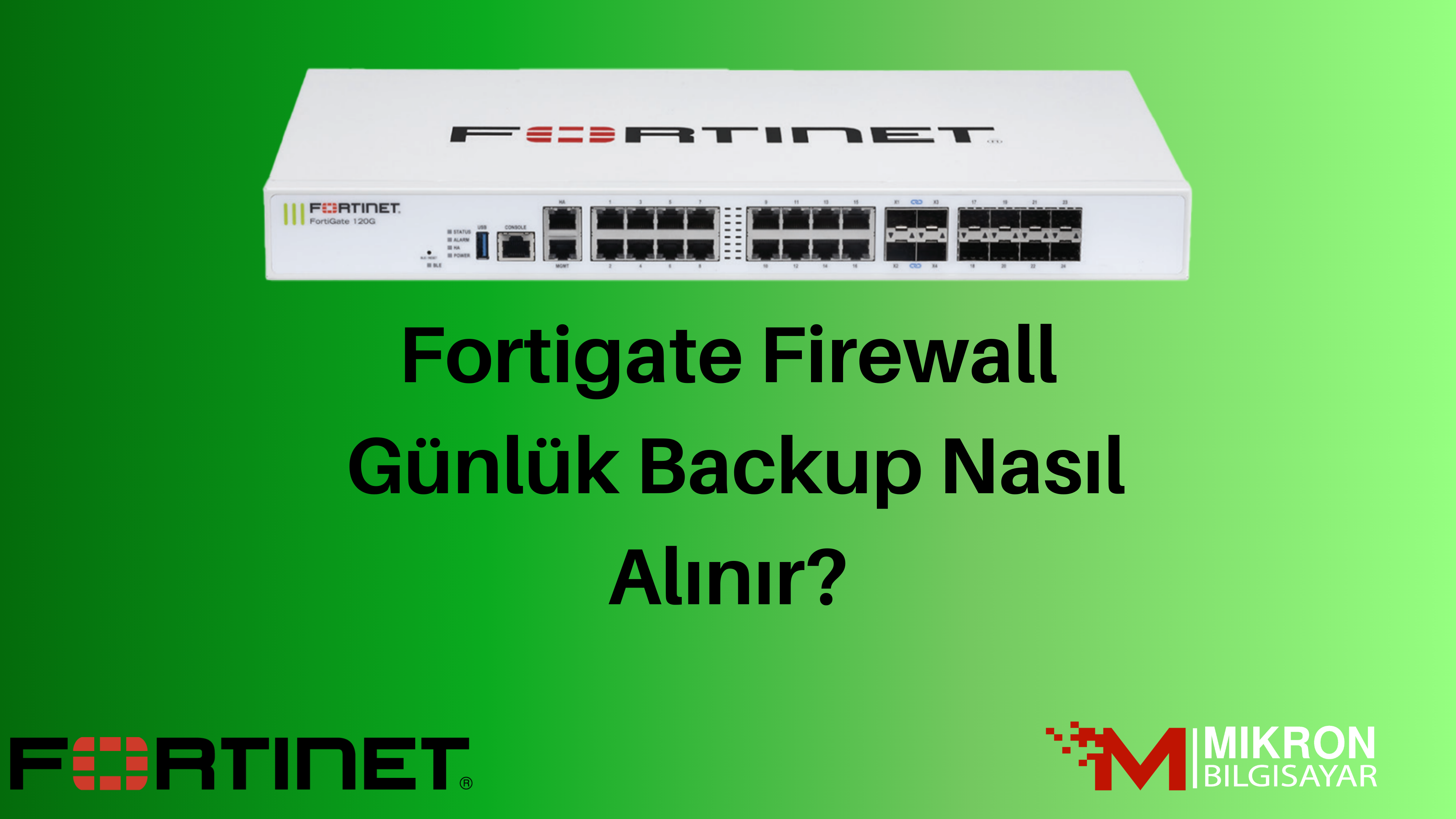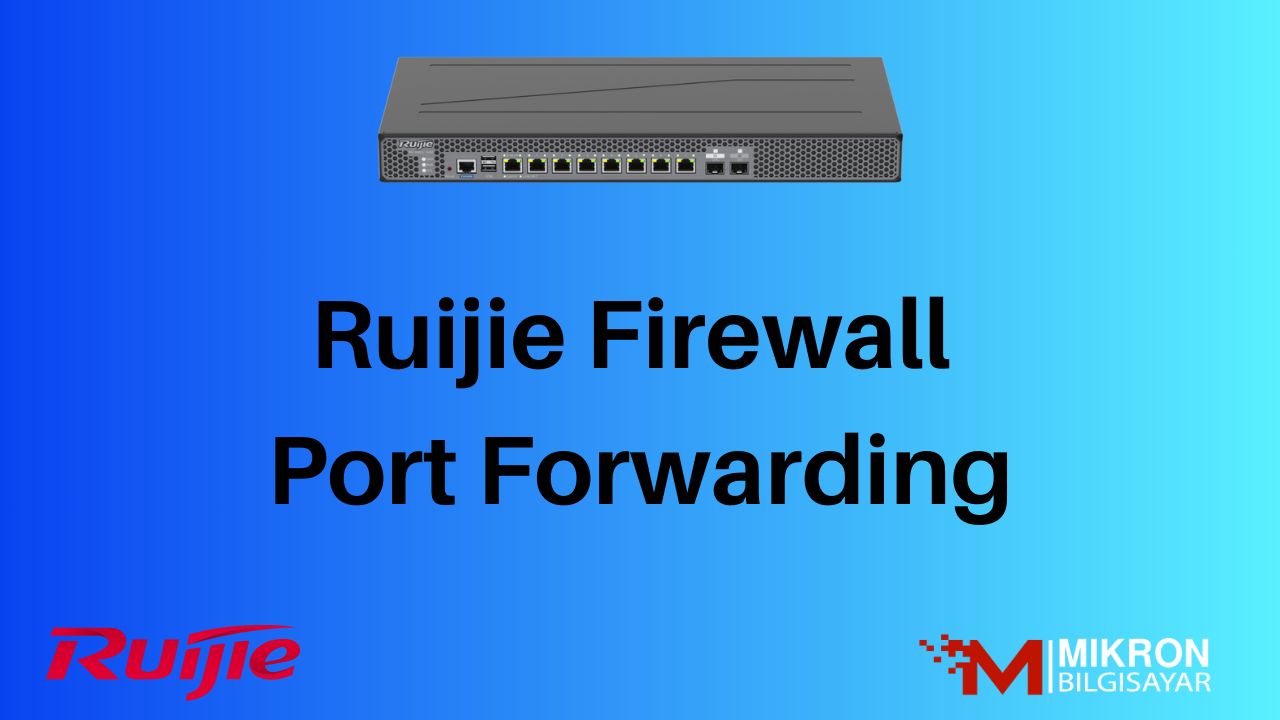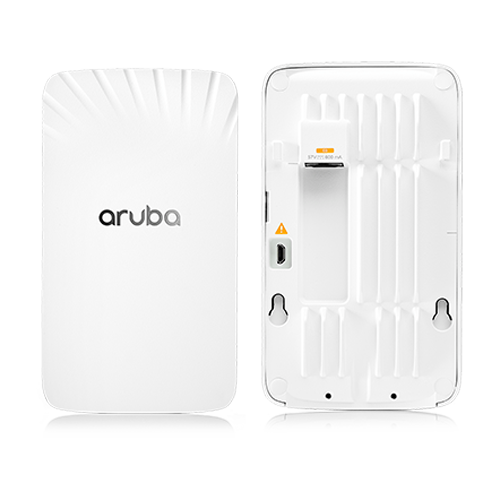
Fortigate Firewall Günlük Backup Nasıl Alınır?

Trellix Epo Kurulumu Nasıl Yapılır?

20 Yıllık Tecrübesi ve Garantili Hizmetleri ile İhtiyaçlarınızı Mikron Bilgisayar ile Karşılayın.


|
Specifications |
|
HARDWARE VARIANTS |
|
AP-500H |
|
5GHz: radio: |
|
Two spatial
stream (SU/MU) MIMO for up to 1.2Gbps wireless data rate (HE80) |
|
2.4GHz radio: |
|
Two spatial
stream (SU/MU) MIMO for up to 287Mbps wireless data rate (HE20) |
|
Note: HE40
operation is supported in 2.4GHz, but uncommon and not recommended for
enterprise deployments |
|
WI-FI RADIO
SPECIFICATIONS |
|
AP type: |
|
High-end
dual radio Wi-Fi 6 Hospitality AP with 1+4 Ethernet ports |
|
Maximum
number of associated client devices: |
|
Up to 256 associated client devices per radio |
|
Maximum
number of BSSIDs: |
|
16 BSSIDs per radio |
|
Supported frequency bands
(country-specific restrictions apply): |
|
2.400 to 2.500GHz (ISM) channels 1-13 |
|
5.150 to 5.250GHz (U-NII-1) channels 36, 40, 44, 48 |
|
5.250 to 5.350GHz (U-NII-2A) channels 52, 56, 60, 64 |
|
5.470 to 5.725GHz (U-NII-2C) channels 100, 104, 108, 112, 116, 120, 124,
128, 132, 136, 140, 144 |
|
5.725 to 5.850GHz (U-NII-3) channels 149, 153, 157, 161, 165 |
|
Dynamic
frequency selection (DFS) optimizes the use of available RF spectrum |
|
Supported radio technologies: |
|
802.11b: Direct-sequence spread-spectrum (DSSS) |
|
802.11a/g/n/ac: Orthogonal frequency-division multiplexing (OFDM) |
|
802.11ax: Orthogonal frequency-division multiple access (OFDMA) with up
to 8 resource units |
|
Supported modulation types: |
|
802.11b: BPSK, QPSK, CCK |
|
802.11a/g/n: BPSK, QPSK, 16-QAM, 64-QAM, 256-QAM (proprietary extension) |
|
802.11ac: BPSK, QPSK, 16-QAM, 64-QAM, 256-QAM, 1024-QAM (proprietary
extension) |
|
802.11ax: BPSK, QPSK, 16-QAM, 64-QAM, 256-QAM, 1024-QAM |
|
802.11n
high-throughput (HT) support: HT20/40 |
|
802.11ac
very high throughput (VHT) support: VHT20/40/80 |
|
Supported data rates (Mbps) : |
|
802.11b: 1, 2, 5.5, 11 |
|
802.11a/g: 6, 9, 12, 18, 24, 36, 48, 54 |
|
802.11n: 6.5 to 300 (MCS0 to MCS15, HT20 to HT40), 400 with 256-QAM |
|
802.11ac: 6.5 to 867 (MCS0 to MCS9, NSS = 1 to 2, VHT20 to VHT80), 1,083
with 1024-QAM |
|
802.11ax (2.4GHz): 3.6 to 574 (MCS0 to MCS11, NSS = 1 to 2, HE20 to HE40) |
|
802.11ax (5GHz): 3.6 to 1,201 (MCS0 to MCS11, NSS = 1 to 2, HE20 to HE80) |
|
802.11n/ac
packet aggregation: A-MPDU, A-MSDU |
|
Transmit
power: Configurable in increments of 0.5 dBm |
|
Maximum
(aggregate, conducted total) transmit power (limited by local regulatory
requirements): |
|
2.4 GHz
band: +20 dBm (17 dBm per chain) |
|
5 GHz band:
+21 dBm (18 dBm per chain) |
|
Note: conducted transmit power levels exclude antenna gain. For total
(EIRP) transmit power, add antenna gain |
|
Minimum
configurable transmit power level: |
|
0 dBm (conducted, per chain) |
|
Advanced
Cellular Coexistence (ACC) minimizes the impact of interference from cellular
networks |
|
Advanced IOT
Coexistence (AIC):Allows concurrent operation of multiple radios in the
2.4GHz band |
|
Maximum
ratio combining (MRC) for improved receiver performance |
|
Cyclic
delay/shift diversity (CDD/CSD) for improved downlink RF performance |
|
802.11ax
Target Wait Time (TWT): To support low-power client devices |
|
Space-time
block coding (STBC) for increased range and improved reception |
|
Low-density
parity check (LDPC) for high-efficiency error correction and increased
throughput |
|
Transmit
beam-forming (TxBF) for increased signal reliability and range |
|
VPN IPsec
throughput performance: 500Mbps or better |
|
WI-FI ANTENNAS |
|
Two
integrated semi-directional antennas for 2×2 MIMO with peak antenna gain of
5.0dBi in 2.4GHz and 5.4dBi in 5GHz. |
|
Built-in antennas are optimized for vertical wall or desk mounted
orientation of the AP. |
|
Combining the patterns of each of the antennas of the MIMO radios, the
peak gain of the combined, average pattern is 3.3dBi in 2.4GHz and 2.4dBi in
5GHz. |
|
OTHER
INTERFACES |
|
Uplink (E0):
Smart Rate Ethernet wired network port (RJ45) |
|
Auto-sensing link speed (100/1000/2500BASE-T) and MDI/MDX |
|
2.5Gbps speed complies with NBase-T and 802.3bz specifications |
|
802.3az Energy Efficient Ethernet (EEE) |
|
PoE-PD: 802.3af/at/bt POE (class 3, 4 or 6) |
|
Local
(E1-E4): Four Ethernet wired network ports (RJ45) |
|
Auto-sensing link speed (10/100/1000BASE-T) and MDI/MDX |
|
802.3az Energy Efficient Ethernet (EEE) |
|
E1 & E2: PoE-PSE: 802.3af/at PoE output; dual 802.3af (both ports) or
single 802.3at (E1 only) |
|
DC power
interface |
|
48Vdc (nominal, +/- 5%), accepts 1.35mm/3.5mm center-positive circular
plug with 9.5mm length |
|
USB 2.0 host
interface (Type A connector) |
|
Cellular modems |
|
IOT or other plug-in accessories |
|
Device battery charging port |
|
Capable of sourcing up to 1A / 5W to an attached device |
|
Bluetooth
Low Energy (BLE5.0) and Zigbee (802.15.4) radio |
|
BLE: up to 7dBm transmit power (class 1) and -100dBm receive sensitivity
(125kbps) |
|
Zigbee: up to 7dBm transmit power and -97dBm receive sensitivity
(250kbps) |
|
Integrated semi-directional antenna with peak gain of 1.2dBi |
|
Visual
indicators (multi-color LEDs): |
|
Power/System status |
|
Radio status |
|
Local network port status (4x) |
|
PoE-PSE status (2x) |
|
Reset
button: |
|
Factory reset, LED mode control (normal/off) |
|
Serial
console interface: |
|
Proprietary, micro-B USB physical jack |
|
POWER SOURCES AND POWER
CONSUMPTION |
|
Power
Sources: |
|
The AP supports direct DC power and Power over Ethernet |
|
When both DC and PoE power sources are available, DC power takes priority
over PoE |
|
Power sources are sold separately; see the 500H Series Ordering Guide for
details |
|
When powered by DC or 802.3bt (class 6) PoE, the AP will operate without
restrictions. |
|
When powered by 802.3at (class 4) PoE with the IPM feature disabled, the
AP will disable the USB port (only) if PoE-PSE is enabled, and support
(802.3af) PoE-PSE power on E1 only (no PSE on E2). |
|
When powered by 802.3af (class 3) PoE with the IPM feature disabled, the
AP will disable the USB port and PoE-PSE capability as well as ports E3 and
E4. |
|
With IPM enabled, the AP will start up without restrictions, but may
dynamically apply restrictions depending on the PoE budget and actual power
consumption. The specific restrictions and order in which they are applied
can be configured. |
|
Maximum
(worst-case) power consumption (without USB or PSE / max): |
|
DC powered: 14W / 50W |
|
PoE powered (802.3bt): 14W / 51W |
|
PoE powered (802.3at): 14W / 25.5W |
|
PoE powered (802.3af): 13.5W / 13.5W |
|
Maximum
(worst-case) power consumption in idle mode (without USB or PSE): |
|
6.2W |
|
Maximum
(worst-case) power consumption in deep-sleep mode (without USB or PSE): |
|
3.5W |
|
MECHANICAL SPECIFICATIONS |
|
Dimensions/weight
(AP- 505; unit, excluding mount bracket): |
|
86mm (W) x 47mm (D) x 150mm (H) |
|
Weight: 360g |
|
Dimensions/weight
(AP-505; shipping): |
|
111mm (W) x 54mm (D) x 167mm (H) |
|
Weight: 450g |
|
ENVIRONMENTAL |
|
Operating: |
|
Temperature: 0°C to +40°C / 32°F to +104°F |
|
Humidity: 5% to 93% non-condensing |
|
ETS 300 019 class 3.2 environments |
|
Storage and
transportation: |
|
Temperature: -40°C to +70°C / -40°F to +158°F |
|
Humidity: 5% to 93% non-condensing |
|
ETS 300 019 classes 1.2 and 2.3 environments |
|
RELIABILITY |
|
Mean Time
Between Failure (MTBF): |
|
780khrs (88yrs) at +25C operating temperature. |
|
REGULATORY
COMPLIANCE |
|
FCC/ISED |
|
CE Marked |
|
RED Directive 2014/53/EU |
|
EMC Directive 2014/30/EU |
|
Low Voltage Directive 2014/35/EU |
|
IEC/EN 60950 |
|
EN 60601-1-1, EN60601-1-2 |
|
IEC/EN 62368-1 |
|
For more country-specific regulatory information and approvals, please
see your Aruba representative. |
|
REGULATORY
MODEL NUMBER |
|
APINH500 |
|
CERTIFICATIONS |
|
Wi-Fi
Alliance: |
|
Wi-Fi CERTIFIED a, b, g, n, ac |
|
Wi-Fi
CERTIFIED 6 (ax) |
|
WPA, WPA2
and WPA3 – Enterprise with CNSA option, Personal (SAE), Enhanced Open (OWE) |
|
WMM, WMM-PS,
Wi-Fi Vantage, Wi-Fi Agile Multiband |
|
Passpoint
(release 2) |
|
Bluetooth
SIG |
|
Ethernet
Alliance (PoE, PD device, class 6) |
|
Minimum Software Versions |
|
ArubaOS
& Aruba InstantOS 8.7.0.0 |
Hızla gelişen ve dur durak bilmeyen teknolojik gelişmeleri, sürekli takip edip yenilikleri müşterilerine hızla aktarmak üzere Haziran 2005 de kurulmuştur. Mikron Bilgisayar “Bilgisayar Bakım Anlaşması, Server Kurulumu Firewall Kurulumu, Network Kurulumu, Kurumsal Bilgisayar Satışı, Sunucu Sanallaştırma, Yedekleme ve Felaket senaryoları çözümleri” konularında faaliyet göstermektedir.
%100 Müşteri memnuniyeti ile kaliteli hizmet anlayışıyla son teknolojik gelişmeleri müşterilerine en iyi şekilde sunmayı amaç edinmiştir. Kullandığı her teknolojiye katma değer ekleyerek müşterilerine bir adım daha ileriye götürmek hedefimizdir.
Ürettiği ürünlerin, modellenmemiş, tasarlanmamış ve orijinal olmasına özen gösteriyor. Hızla Değişen ve hızla gelişen bu dünya da müşterilerine en iyi ve en yeni çözümleri sunan Mikron Bilgisayar bunların yanında en büyük amacı müşterileri memnuniyeti, sonsuz güven ve her konuda çözüm ortağı olabilmektir. Yılların vermiş olduğu tecrübelerimiz ile müşterilerimize; Sunucu
Şirketimiz Microsoft, Cisco, Hp, Dell, Fortigate, Lenovo, Microsoft, Veeam, Vmware gibi sektöründe lider firmalarla program ortaklığı yapmaktadır.



Sorularınız mı Var?
